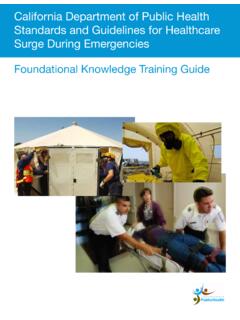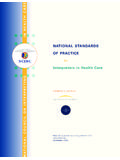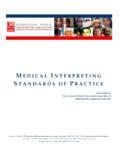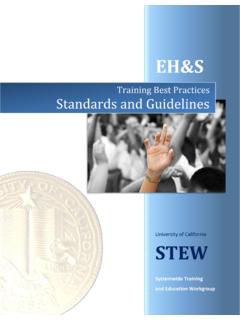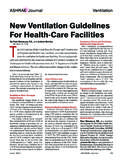Transcription of California Department of Public Health Standards and ...
1 Volume II: Government-Authorized Alternate Care SitesCalifornia Department of Public Health Standards and guidelines for healthcare surge during EmergenciesFoundational Knowledge Volume I: HospitalsVolume II: Government-Authorized Alternate Care Sites Volume III: Payers Volume IV: Licensed healthcare Clinics (available 2008) Volume V: Long-Term Care Facilities (available 2008)Volume VI: Licensed healthcare Professionals (available 2008)Hospital Operational Tools ManualGovernment-Authorized Alternate Care Site Operational Tools ManualFoundational Knowledge Training GuideHospital Training GuideGovernment-Authorized Alternate Care Site Training GuidePayer Training GuideReference ManualCalifornia Department of Public Health Standards and guidelines for healthcare surge during emergencies Cover Images Production Rights: y Stephen Chernin / Getty Images y Image published with permission from healthcare Purchasing News January 2007 Volume II: Government-Authorized Alternate Care Sites California Department of Public Health 1 Table of Contents 1.
2 California 's healthcare System Response to a healthcare 4 California Department of Public Health Initiates Planning for healthcare 5 healthcare surge Standards and guidelines Manuals, Operational Tools and Training 6 Key healthcare surge Planning Concepts for California .. 8 Overview of Government-Authorized Alternate Care Sites Volume .. 9 2. Definition and Description of Government-Authorized Alternate Care 12 3. Authority to Establish a Government-Authorized Alternate Care 14 4. Alternate Care Site 15 Developing the Alternate Care Site Planning Team .. 16 General Planning Considerations for Alternate Care 17 Planning for Pandemic Influenza .. 19 5. When to Establish a Government-Authorized Alternate Care 23 6.
3 Incident Command 26 7. Patient 28 Standard of Care .. 28 Patient Care Provided at an Alternate Care Site .. 28 Patient Decontamination .. 29 8. Facility 30 Site 30 Roadway Access and 31 Building Size Considerations .. 31 Building 32 Clinical 32 Physical 32 Site Assessment 33 Facility Contract Considerations .. 39 Facility Liability Protections .. 41 9. Volume II: Government-Authorized Alternate Care Sites California Department of Public Health 2 Planning for the 42 Set-up 47 Clinical 48 Special Considerations for Pharmacists .. 52 Credentialing and Personnel Verification for Clinical Staff .. 55 Use of Out-of-State or Inactive 58 Support 58 Alternate Care Site Command Staff.
4 62 Maintaining 63 Workforce Health and Safety and Workers Rights .. 63 Support Provisions for Staff .. 65 Immunities from Liability for Alternate Care Site Staff .. 74 Governor s Standby 77 10. Supplies, Pharmaceuticals and 81 Maximizing Sustainability .. 81 Pharmaceuticals .. 82 Supplies and Equipment .. 91 Personal Protective Equipment .. 95 Communication .. 97 Procurement of Resources Prior to an Event .. 97 Contract Considerations .. 98 Acquiring Additional Resources through the SEMS Process .. 99 Storage 100 Staging and Deployment .. 104 11. Patient 107 12. Security 108 Establishing a Security System at an Alternate Care Site .. 108 Facility Lock-Down .. 112 13. Environmental 117 14.
5 Hazardous Waste 119 Medical Waste 120 15. Mass Fatality 122 16. Considerations for Staff 124 Volume II: Government-Authorized Alternate Care Sites California Department of Public Health 3 Pre-Event 124 On-Site/Just-in-Time 124 17. 125 Patient Patient Registration .. 131 Medical Record and Records Retention .. 135 Paper-Based Medical 135 Short Form Medical Record .. 135 Document Storage .. 138 Alternate Care Site Administrative and Disease Reporting Requirements .. 138 Health Insurance Portability and Accountability Act Compliance during healthcare surge .. 138 California State Privacy 139 Patient Valuables Tracking .. 139 Workers' Compensation for Volunteers .. 143 18. 147 Federal Emergency Management Agency Public Assistance for Alternate Care Sites during a healthcare surge .
6 147 19. Alternate Care Site 149 Facility 149 20. Alternate Care Site 153 21. 154 Volume II: Government-Authorized Alternate Care Sites California Department of Public Health 4 1. California 's healthcare System Response to a healthcare surge An attack using biological, chemical, or radiologic agents, the emergence of diseases such as severe acute respiratory syndrome or pandemic influenza or the occurrence of a natural disaster are threats capable of imposing significant demands on California s healthcare resources and state-wide healthcare delivery system. While California has built a strong network of healthcare services and agencies through local Health departments, local emergency medical services agencies, hospitals, clinics, long term care facilities and healthcare professionals, developing a coordinated response to a dramatic increase in the number of individuals requiring medical assistance following a catastrophic event will be challenging.
7 The overwhelming increase in demands for medical care arising out of such an event is called healthcare surge . While many hospitals, clinics and other healthcare providers have developed individualized healthcare surge plans, the sheer magnitude of a disaster or wide-spread disease may require a different planning approach. In Emergency Management Principles and Practices for healthcare Systems1, the Institute for Crisis, Disaster, and Risk Management has found that healthcare system response during emergencies demonstrates the following recurrent findings: Local response is primary: The initial response to any medical event will be almost entirely based upon locally available Health and medical organizations. Medical response is complex: The response to a large scale emergency impacts an entire community and involves numerous diverse medical and Public Health entities, including healthcare systems and facilities, Public Health departments, emergency medical services, medical laboratories, individual healthcare practitioners, and medical support services.
8 Coordinated response is essential: An effective healthcare system response to major events usually requires support from Public safety agencies and other community response entities that are not normally partnered with the community healthcare systems during everyday operations. Bridging the Public -private divide : healthcare organizations have traditionally planned and responded to emergencies as individual entities. This has occurred in part because of the " Public -private divide," the legal, financial, and logistical issues in planning and coordination between Public agencies and primarily private healthcare entities. healthcare organizations must view themselves as an integrated component of a larger response system. Public Health as an essential partner: Public Health departments are not traditionally integrated with other community emergency response operations, including the acute care medical and mental Health communities.
9 Public Health departments are an essential partner in any successful response to a healthcare surge . Volume II: Government-Authorized Alternate Care Sites California Department of Public Health 5 The need for robust information processing: Medical issues that arise from large scale incidents are rarely immediately apparent, and complex information must be collected from disparate sources, processed and analyzed rapidly in order to determine the most appropriate course of action. This requires a robust information management process that can differ markedly from any routinely used healthcare system. The need for effective overall management: Medical response to a healthcare surge situation can be exceedingly complex, with many seemingly diverse tasks.
10 Responsibility for each of these activities can vary significantly among organizations in different communities. Even within a single healthcare system, many actions require coordination between disparate operating units that don t work together on a regular basis. Despite these challenges, all necessary functions must be adequately addressed for a successful mass casualty or mass effect response. Medical system resiliency: A major hazard impact that creates the need for healthcare surge capacity also is likely to impact the normal functions of the everyday healthcare systems ( , some degree of mass effect). Medical system resiliency is necessary for the system to maintain its usual effectiveness and, at the same time, to provide a reliably functioning platform upon which medical surge may occur.
